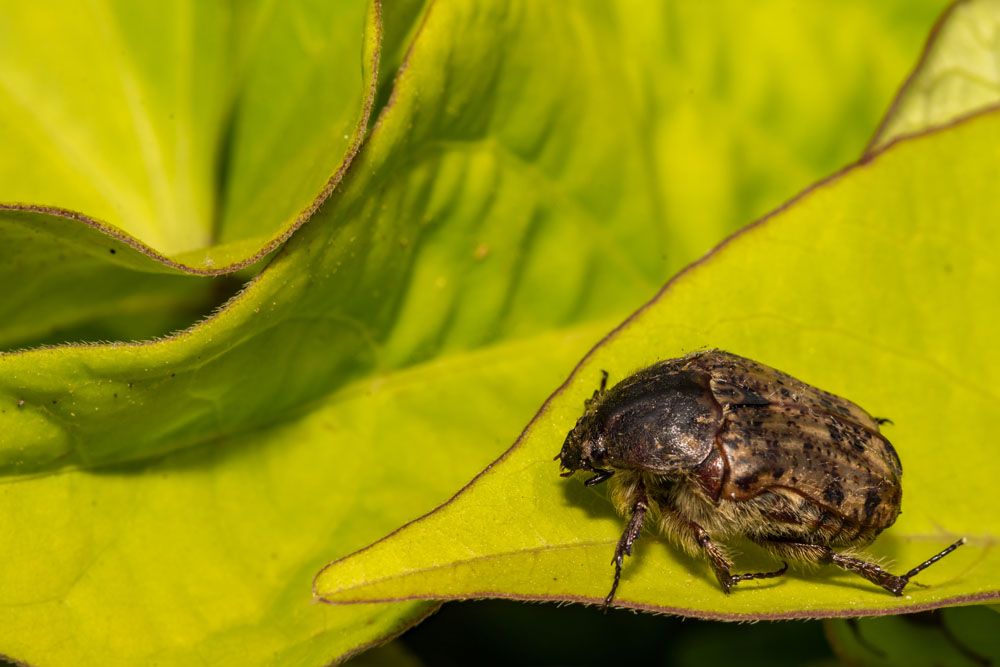
Bumble Flower Beetle – Euphoria inda
Bumble Flower Beetle: Appearance, Territory, Damage and Life Cycle
Latin Name: Euphoria Inda
Appearance: These are roughly oval beetles that are 12-15 mm in length. The hue ranges from yellow-brown to dark reddish brown in general. The body is patterned with dark dots and is heavily coated in yellowish-brown hairs. Adults are powerful fliers that may generate an audible buzzing noise when flying.
Hosts Plants: Adult beetles consume a wide range of sweet or fermenting liquids. In late summer, they are frequently drawn to the bacterial ooze created by the infestation of numerous trees. They may also cause harm to maturing maize, ripe apples, grapes, melons, and peaches on occasion. Sunflower pollen and nectar, as well as strawflower and daylily nectar, may be food plants.
Territory: It is native to Southern Africa and may be observed climbing trees and plants in quest of food or a partner.
Damage Insect Cause: Adult Bumble Flower Beetle have been found to harm corn during the silk stage, albeit this is a rare occurrence. Such damage might be serious, although it is generally restricted to a small region. Adult beetles are drawn to fermenting sugar and may be spotted eating on damaged fruits and vegetables.
Life History and Habits: The adult beetle, which burrows into the earth for cover during the fall, is the overwintering stage. In the spring, the beetles emerge, mate, and the females look for moist decomposing organic debris to deposit eggs in. Eggs are commonly laid in horse or cattle dung, old wood, and other damp, decaying plant materials. (These insects will occasionally colonize compost piles.) The C-shaped grubs eat nearly entirely on these materials; however, they have been observed chewing the roots of container-grown shrubs growing in organic matter-rich soils. When the larvae reach adulthood, they tamp down the clay chambers in which they pupate.
Adults appear a few weeks later and can be seen from mid-summer to early October. Adult beetles consume a wide range of sweet or fermenting liquids. They are typically drawn in late summer to the bacterial slime generated by various tree infections, sometimes congregating in great numbers on trunks or branches. (Despite their presence near the slime’s source, bumble flower beetles are not implicated in the transmission or development of the underlying plant illnesses that cause goo formation.) They are also drawn to maturing maize as well as ripe or overripe apples, grapes, melons, and peaches. Adults consume the pollen and nectar of flowers such as sunflower, strawflower, thistle, and daylily. They migrate into the earth to overwinter during cold weather. Each year, one generation is generated.
